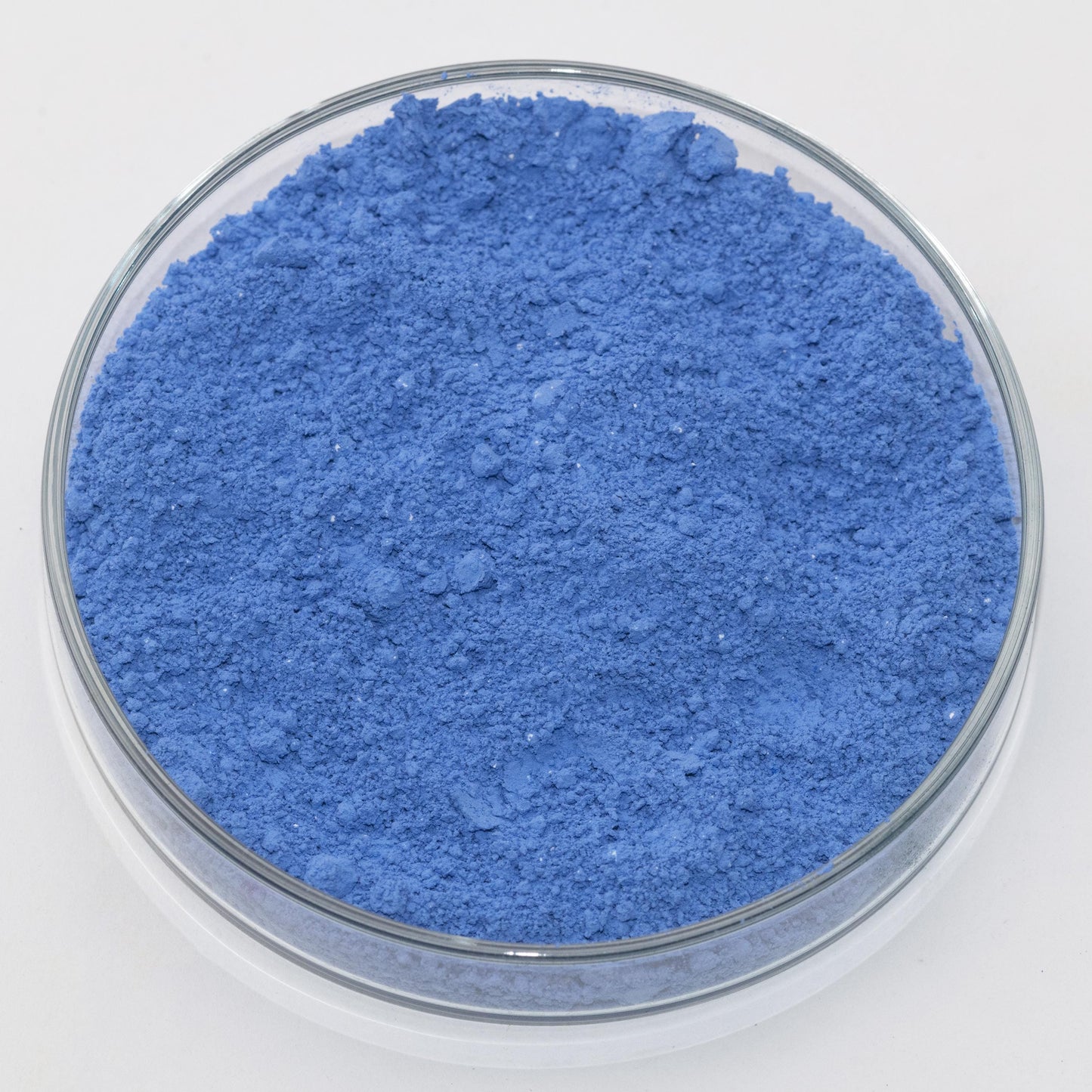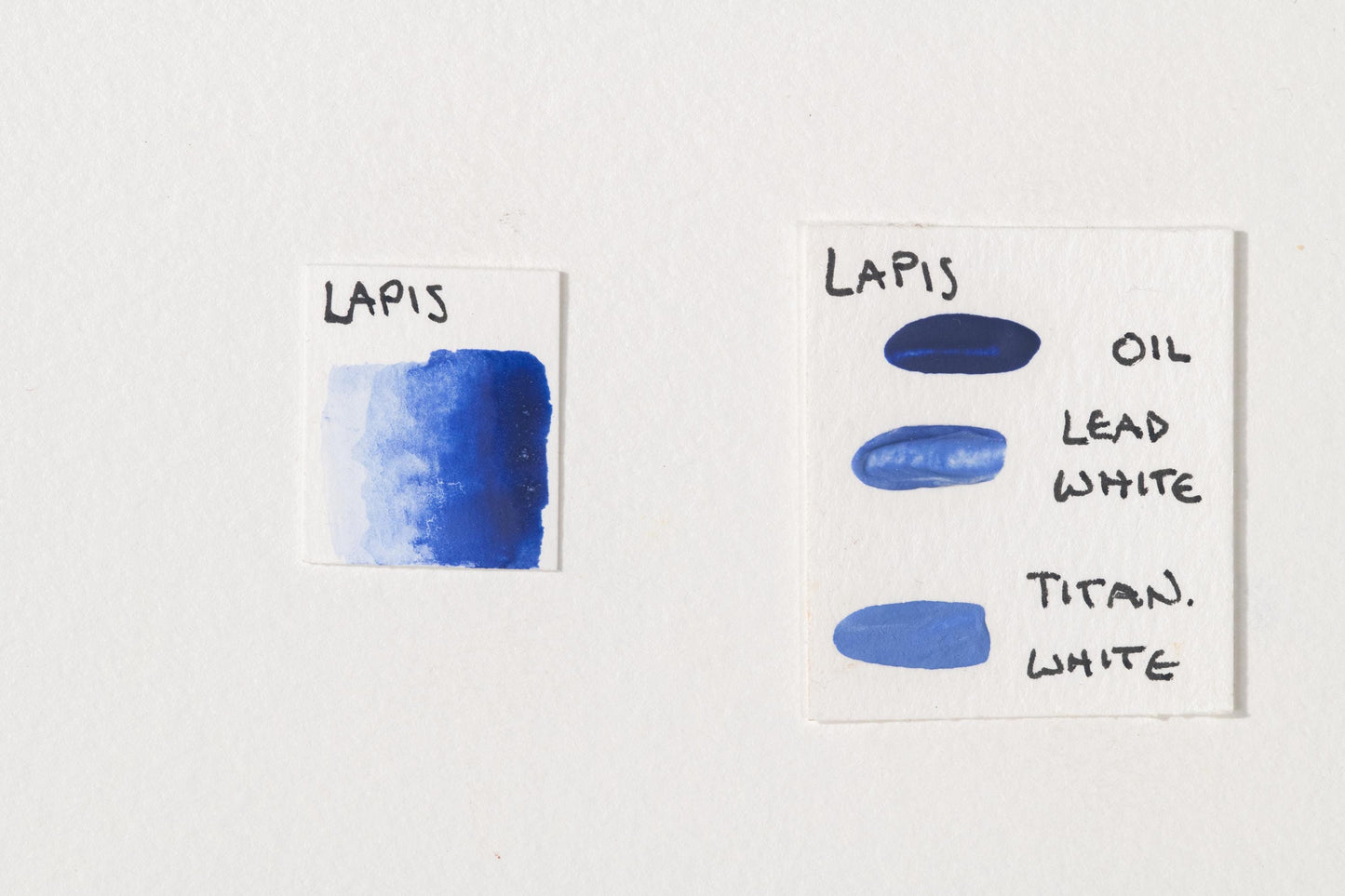Lapis Lazuli
Lapis Lazuli
Couldn't load pickup availability
Share



Description
Lapis Blue is a handmade single pigment created through a historical process of grinding and refining natural lapis lazuli, a semi-precious stone. The pigment is produced by carefully extracting the deep blue particles from the mineral while removing excess calcite and pyrite, resulting in an exceptionally rich and intense ultramarine hue. Lapis Blue is one of the most valued natural pigments, prized for its extraordinary luminosity and subtle variations in tone.
Lapis Blue has outstanding lightfastness, making it highly durable for both historical and contemporary artwork. It blends seamlessly with other pigments, offering deep, radiant blues with a slight granulating texture. Its semi-translucent quality allows for exquisite layering and glazing in oil, watercolor, and tempera applications. Compared to synthetic Ultramarine, Lapis Blue possesses a softer, more organic appearance, with subtle shifts in color that make it ideal for fine art, manuscript illumination, and iconography.
History
Lapis Blue, derived from lapis lazuli, has been one of the most prestigious and expensive pigments in history, valued for its brilliance and rarity.
During antiquity, lapis lazuli was mined in Afghanistan and traded along the Silk Road. The ancient Egyptians used powdered lapis for decorative objects, cosmetics, and burial masks, including the famous gold mask of Tutankhamun.
In the Middle Ages and Renaissance, lapis lazuli was processed into the pigment known as natural ultramarine. It became the most prized blue pigment in European painting, often reserved for the robes of the Virgin Mary in religious art due to its rarity and cost. Artists such as Giotto, Fra Angelico, and Vermeer used Lapis Blue in their works to achieve unparalleled depth and brilliance. The pigment was so valuable that it was sometimes worth more than gold. In the pictured artwork 'Girl With a Pearl Earring' by Vermeer, the turban worn by the woman is richly colored with fine lapis to show her extravagance and beauty.
By the 18th and 19th centuries, the invention of synthetic Ultramarine in 1826 provided a more affordable alternative, reducing reliance on natural lapis lazuli. However, true Lapis Blue continued to be used for high-end artwork, manuscript restoration, and conservation projects.
Today, Lapis Blue remains a luxury pigment, sought after by artists and conservators for its historical authenticity, exquisite depth, and vibrant color variations. Its rarity and labor-intensive preparation ensure its status as one of the most treasured pigments in the world.
Health and Safety
Precautions:
Keep out of reach of children and pets.
Do not consume.
Not for cosmetic or food usage.
Do not spray apply.
For further health information contact a poison control center.
Use care when handling dry pigments and avoid dust formation.
Use particular caution with fibrous, fine, or toxic pigments.
Do not eat, drink, or smoke near dry pigments.
Avoid breathing in pigment dust and use a NIOSH-certified dust respirator with sufficient rating for dry pigment.
Wash hands immediately after use or handling.
If dust is likely, always wear protective clothing to keep out of eyes, lungs, off skin, and out of any contact as well as keep area ventilated.
This product may contain chemicals known by the State of California to cause cancer, birth defects, or reproductive harm.
Warnings and bottle information are abbreviated.
Pigment Information
Pigment Type: Natural (Mineral-based) from Lazurite (Na₆Ca₂Al₆Si₆O₂₄S₂)
Suitable Mediums: Watercolor, Oil, Tempera, Acrylic
Lightfastness: Best
Opacity: Semi-translucent
Other Names: Natural Ultramarine, Genuine Ultramarine, Lazurite Blue
Color Index Code: PB29 (Natural)
Image: 'Girl with a Pearl Earring' by Vermeer from the Mauritshuis



